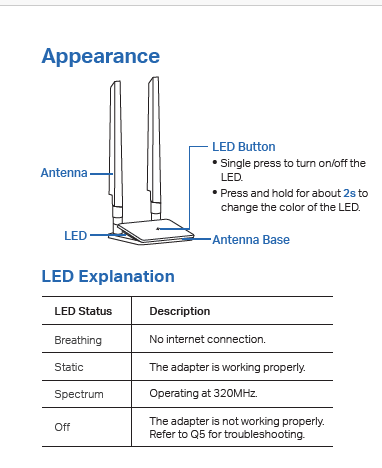MLO?
What advantage is MLO? Slower speed for me.
- Copy Link
- Subscribe
- Bookmark
- Report Inappropriate Content
I understand that you're asking about the advantages of MLO (Multi-Link Operation) and mentioning that you're experiencing slower speeds. According to our knowledge base, MLO is a feature available only on TP-Link Wi-Fi 7 models. Its main advantage is that it enables devices to use multiple frequency bands simultaneously, which can improve overall performance and reliability by reducing congestion and increasing throughput. However, the actual speed benefit can depend on your device compatibility, network environment, and interference levels. If you're not using a Wi-Fi 7 model or your devices do not support MLO, you won't be able to take advantage of this feature. If you are using a compatible model and still experiencing slower speeds, it may be due to other factors such as interference, device limitations, or network configuration.
For your speed issues i recommend the following post make sure to read the following sections
Recommended Troubleshooting
Troubleshooting Slow Internet Speed with Deco Devices
Troubleshooting Slow Speed on Main Deco
- Copy Link
- Report Inappropriate Content
MLO requires MS Windows 24H2 installed which supports MLO. You might be able to connect to it without that, but I don't know what would happen.
There are 2 'versions' of MLO, a 2 band (5 and 6Ghz bands) and a 3 band (2.4, 5, and 6 bands) version.
Wi-Fi 7 introduces two advanced modes of operation for Multi-Link Operation (MLO): STR (Simultaneous Transmit and Receive) and EMLSR (enhanced Multi-Link-Single-Radio).
STR (Simultaneous Transmit and Receive) allows a device to use multiple links (radios) at the same time for higher throughput and lower latency, ideal for high-performance devices like access points and laptops. In contrast, eMLSR (enhanced Multi-Link Single-Radio) uses a single radio but switches rapidly between channels by "listening" on multiple links, making it more power-efficient while providing dynamic switching for responsive performance, which is better suited for battery-powered or mobile devices.
I am NOT sure all router's and Deco's support EMLSR.
My BE68 Deco's do. However, I can't see a true advantage using one over the other?
- Copy Link
- Report Inappropriate Content
@IrvSp https://www.tp-link.com/us/blog/1067/what-is-wifi-7-s-multi-link-operation-mlo-/
- Copy Link
- Report Inappropriate Content
Yes aware of how it works, but my BE65 Deco that had MLO but only the combined 5 and 6Ghz bands. That Deco was replaced with a BE68 and it has both a 2 band and 3 band MLO.
Those 2 methods do have some difference in operation, see arxiv_org/html/2501.04149v1 for details (replace ._. with '.').
I have some issues using the 3 Band MLO... like my iPhone that can connect to the 2 Band MLO, but NOT the 3 Band MLO. My PC seems to have a problem with Screen Sharing when connected to the 3 band MLO, it takes longer to connect, and sometimes I have to restart it many time to connect to the phone. Not an issue with the 2 band MLO.
The Deco app on the phone, doesn't fully support MLO, in that it is NOT listed for a CONNECTION PREFERENCE on a device...
The TP-LINK TBE550E I have has an LED on the base, and on selection for the LED Color will indicate a 320Mhz Channel Connection that WiFi 7 can do (faster speed with wider channels).

They call that LED display 'Spectrum', like a 'rainbow' of changing color on the base. That ONLY works on the 3 band MLO, not the 2 band MLO.
Now in reading how they work, the 2 band made sense to me, each band uses a single antennae, one for in, the other for out vs. somehow sharing the 3 bands (EMLSR).
From the link above this is what they 'found':
==========================
IV Conclusion and Future Work
In this study, we investigated the performance of Simultaneous Transmission and Reception (STR) and Enhanced Multi-Link Single Radio (EMLSR) within the context of Wi-Fi 7’s Multi-Link Operation (MLO). Through a series of simulations using the ns-3 network simulator, we analyzed how each technique performs under varying conditions, such as changes in modulation and coding schemes (MCS), channel bandwidth, and interference levels. Our results exhibiting the throughput improvements and latency reductions offered by STR and EMLSR compared to SLO verify the benefits of Wi-Fi 7 over older Wi-Fi generations. From our observations and simulation scenarios, STR consistently outperformed EMLSR.
==========================
As I discovered, in some cases, the 2 band version is better for me, while the TBE550E conforms to the above diagram for indicating that it connected to a 320Mhz wide channel wiht the 3 band... however, I've not tested only the 6Ghz SSID on that device, my D/L speed is 5 to 10 percent faster using MLO.
- Copy Link
- Report Inappropriate Content
Information
Helpful: 0
Views: 337
Replies: 4
Voters 0
No one has voted for it yet.

